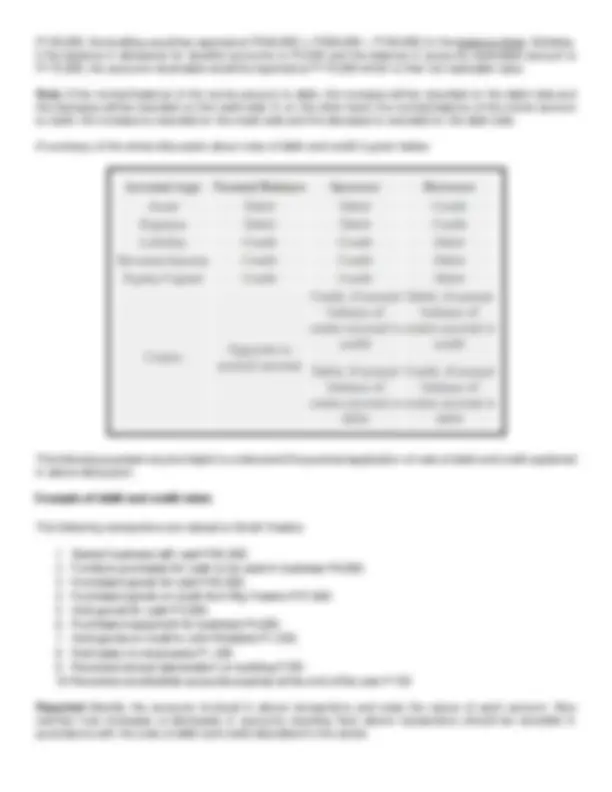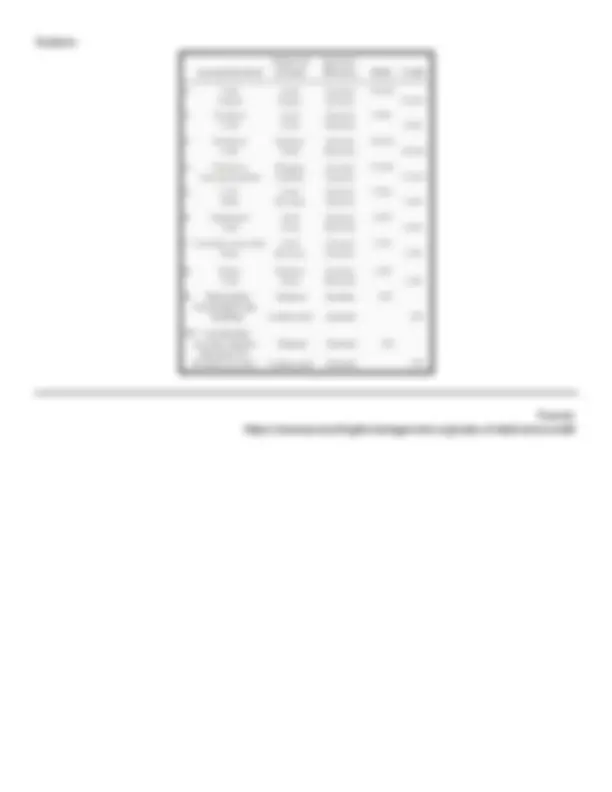




Study with the several resources on Docsity

Earn points by helping other students or get them with a premium plan


Prepare for your exams
Study with the several resources on Docsity

Earn points to download
Earn points by helping other students or get them with a premium plan
Community
Ask the community for help and clear up your study doubts
Discover the best universities in your country according to Docsity users
Free resources
Download our free guides on studying techniques, anxiety management strategies, and thesis advice from Docsity tutors
Rules of Debit and Credit in Accounting
Typology: Summaries
1 / 4

This page cannot be seen from the preview
Don't miss anything!



Definition and explanation The rules of debit and credit (also referred to as golden rules of accounting) are the fundamental principles of modern double entry accounting that guide accountants and bookkeepers in journalizing financial transactions and updating ledger accounts of a business entity. Since the accounting cycle starts with a journal comprising of debit and credit entries, the use of a double entry accounting is not possible without strict adherence to these rules. The debit and credit rules are the heart of accounting and their understanding is extremely important for individuals who are responsible for handling the accounting system of a business entity. It is explained that an event can be journalized as a valid financial transaction only when it explicitly changes the financial position of an entity. In accounting, a change in financial position essentially signifies an increase or decrease in the balances of two or more accounts or financial statement items. The rules of debit and credit determine how a change affected by a financial transaction can be updated in a journal and then applied to accounts in ledger. Let’s see in detail what these fundamental rules are and how they work while a business entity maintains and updates its accounting records under a double entry system. A ledger account (also known as T-account) consists of two sides – a left hand side and a right hand side. The left hand side is commonly referred to as debit side and the right hand side is commonly referred to as credit side. In practice, the term debit is denoted by “Dr” and the term credit is denoted by “Cr”. In the rest of this discussion, we shall use the terms debit and credit rather than left and right. When a financial transaction occurs, it affects at least two accounts. For example, purchase of machinery for cash is a financial transaction that increases machinery and decreases cash because machinery comes in and cash goes out of the business. The increase in machinery and decrease in cash must be recorded in the machinery account and the cash account respectively. As stated earlier, every ledger account has a debit side and a credit side. Now the question is that on which side the increase or decrease in an account is to be recorded. The answer lies in the learning of normal balances of accounts and the rules of debit and credit. Normal balance of accounts The understanding of normal balance of accounts helps understand the rules of debit and credit easily. If the normal balance of an account is debit, we shall record any increase in that account on the debit side and any decrease on the credit side. If, on the other hand, the normal balance of an account is credit, we shall record any increase in that account on the credit side and any decrease on the debit side. The normal balance of all asset and expense accounts is debit whereas the normal balance of all liabilities, and equity (or capital) accounts is credit. The normal balance of a contra account (discussed later in this article) is always opposite to the main account to which the particular contra account relates. Application of the rules of debit and credit The basic rules of debit and credit applicable to various classifications of accounts are listed below: (1). Asset accounts: Normal balance: Debit Rule: An increase is recorded on the debit side and a decrease is recorded on the credit side of all asset accounts.
(2). Expense accounts: Normal balance: Debit Rule: An increase is recorded on the debit side and a decrease is recorded on the credit side of all expense accounts. (3). Liability accounts: Normal balance: Credit Rule: An increase is recorded on the credit side and a decrease is recorded on the debit side of all liability accounts. (4). Revenue/Income accounts: Normal balance: Credit Rule: An increase is recorded on the credit side and a decrease is recorded on the debit side of all revenue accounts. (5). Capital/Equity accounts: Normal balance: Credit Rule: An increase is recorded on the credit side and a decrease is recorded on the debit side of all equity accounts. (6) Contra accounts: Normal balance: Always opposite to the relevant normal account. The normal balance of a contra account can be a debit balance or a credit balance Examples of contra account: Accounts receivable is an asset account that normally has a debit balance. The allowance for doubtful accounts is a contra account to the accounts receivable and normally has a credit (opposite) balance. Other examples of contra accounts include:
Solution: Source: https://www.accountingformanagement.org/rules-of-debit-and-credit/